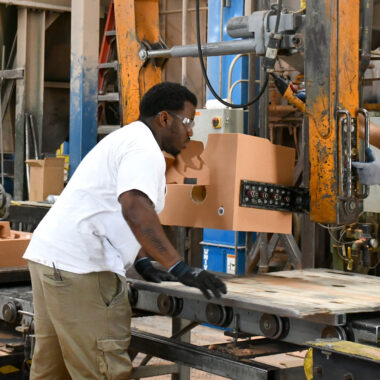Technology Unleashed: Improvements About Aluminum Casting
Technology Unleashed: Improvements About Aluminum Casting
Blog Article
Crafting Perfection: Just How to Achieve High-Quality Aluminum Castings Every Single Time
In the world of light weight aluminum spreading, the search of perfection is a continuous trip that requires a careful approach and a keen understanding of the intricacies included. Accomplishing regular top quality light weight aluminum spreadings requires an extensive grasp of the procedures, from picking the suitable alloy to carrying out specific mold designs and meticulously managing spreading criteria.
Understanding Aluminum Spreading Processes
Aluminum casting processes, important in the manufacturing sector, include the complex transformation of liquified light weight aluminum right into strong kinds through a collection of thoroughly controlled steps. Comprehending these processes is critical to accomplishing high-grade light weight aluminum spreadings regularly - about aluminum casting. The main techniques utilized in aluminum casting are pass away spreading, sand spreading, and financial investment casting

Each of these processes has its advantages and is chosen based on aspects like complexity, quantity, and desired finish of the light weight aluminum spreading. about aluminum casting. Recognizing the intricacies of these methods is crucial for producers intending to generate high-quality aluminum spreadings continually
Selecting the Right Light Weight Aluminum Alloy
Choosing the ideal aluminum alloy is an essential decision in the production of high-quality light weight aluminum spreadings. When choosing a light weight aluminum alloy for spreading, it is vital to think about the specific requirements of the application to make sure optimal performance.
One of the most generally used aluminum alloys for casting is A356 - about aluminum casting. For applications needing high stamina, 7075 aluminum alloy is a prominent choice due to its outstanding strength-to-weight proportion.
Along with mechanical properties, considerations such as cost, availability, and post-casting procedures need to additionally affect the selection of the ideal aluminum alloy. By meticulously assessing these elements, makers can make sure the manufacturing of top notch light weight aluminum spreadings that fulfill the preferred specs.
Carrying Out Proper Mold And Mildew Layout
Creating an efficient mold layout is vital for making sure the successful production of high-quality light weight aluminum spreadings. Correct mold and mildew style plays a significant role in achieving the wanted attributes of the end product. To execute an effective mold and mildew style, aspects such as material circulation, cooling rates, and part geometry have to be meticulously thought about.
One key element of mold and mildew design is making certain appropriate filling and solidification of the aluminum within the mold and mildew cavity. This includes developing runner and gating systems that facilitate smooth steel flow and protect against flaws such as air entrapment or incomplete dental filling. Additionally, including cooling networks into the mold and mildew design aids control solidification prices and reduce the threat of porosity or shrinking problems.

Controlling Casting Parameters

Making Certain Post-Casting High Quality Checks
To keep the high top quality of aluminum castings, complete post-casting quality checks are essential. After the casting procedure is completed, it is important to make certain that the last items satisfy the preferred standards and specifications.
Dimensional precision is an additional critical aspect that should be confirmed during post-casting top quality checks. Dimensions of vital measurements and resistances need to be taken to confirm that the castings adapt the needed specs. Furthermore, mechanical buildings such as hardness, tensile toughness, and influence resistance might require to be examined via product testing to make sure that the castings possess the required strength and resilience this article for their intended application.
Conclusion
To conclude, achieving high-quality light weight aluminum spreadings needs a complete understanding of the spreading processes, selecting the appropriate alloy, designing mold and mildews effectively, controlling casting criteria thoroughly, and carrying out post-casting high quality checks diligently. By adhering to these actions, producers can consistently generate aluminum castings that fulfill the highest possible requirements of quality and performance.
Attaining constant premium light weight aluminum castings demands a detailed grasp of the procedures, from choosing the appropriate alloy to implementing specific mold layouts and carefully controlling casting parameters. The key techniques utilized in aluminum casting are pass away spreading, sand casting, and financial investment casting.
Investment casting, likewise recognized as precision spreading, entails producing wax patterns that are coated in ceramic to develop mold and mildews.Selecting the proper aluminum alloy is a vital decision in the manufacturing of high-quality aluminum castings.Making certain try this site accurate control over spreading criteria is vital for keeping uniformity and high quality in light weight aluminum spreading production.
Report this page